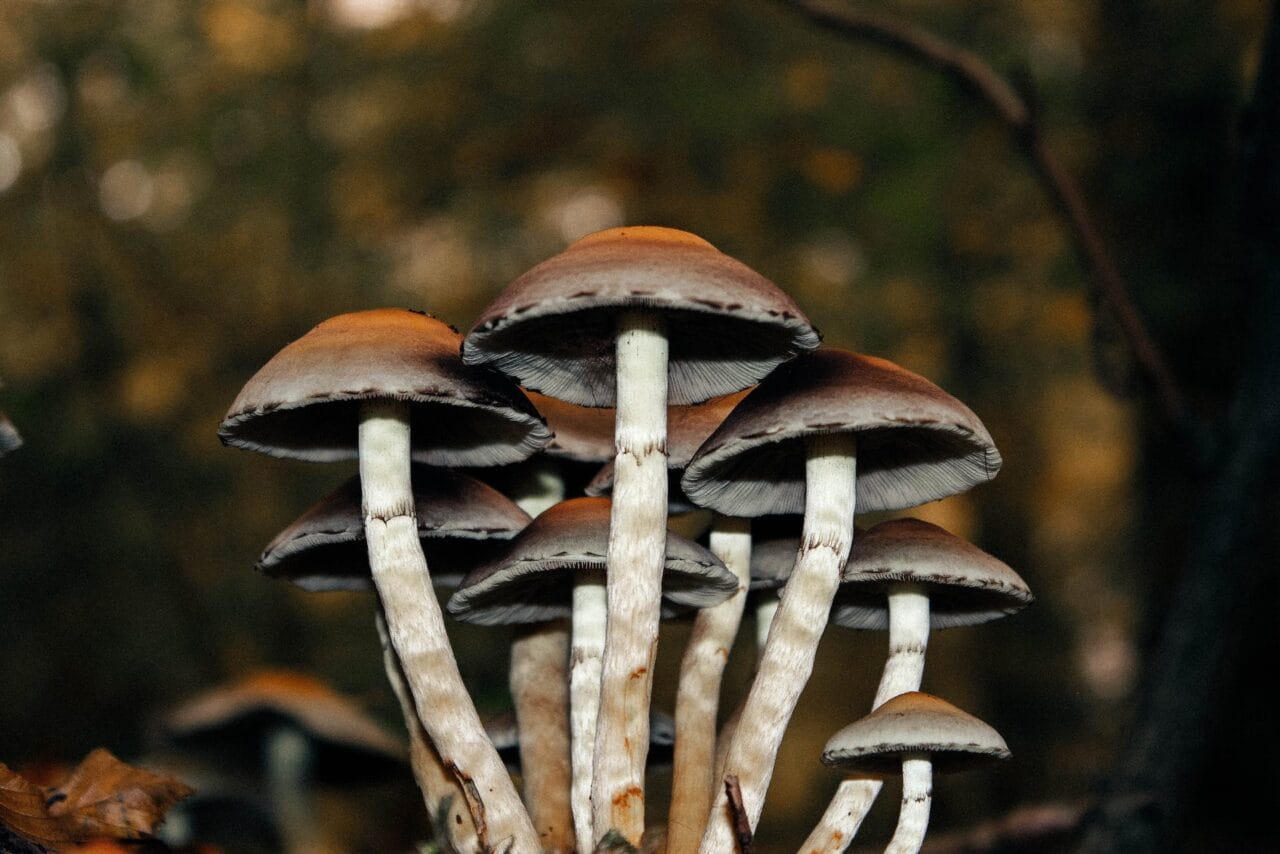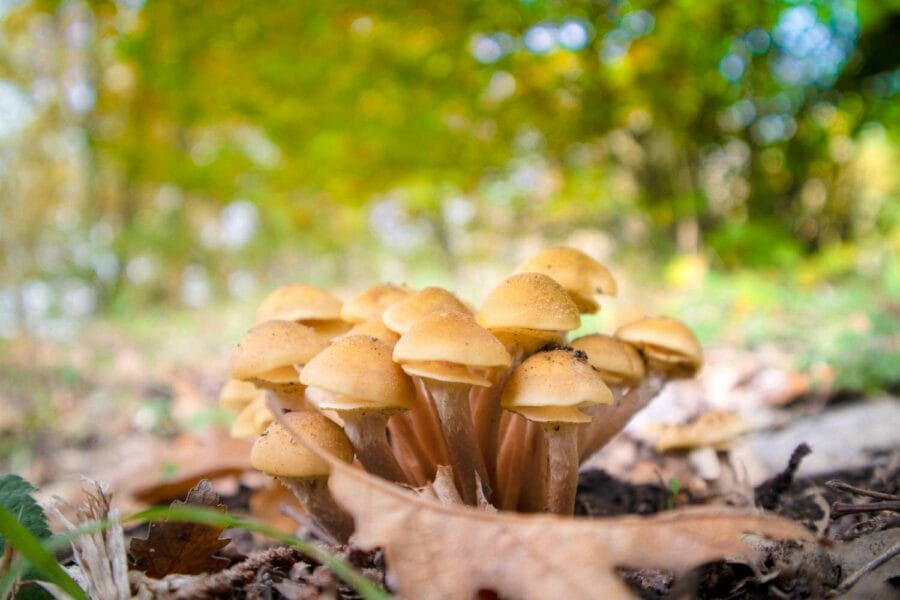Psilocybin, a psychoactive compound discovered in magic mushrooms, is frequently used for recreational purposes to induce euphoria and hallucinations.
Beyond its mind-altering effects, psilocybin has been studied for its potential benefits in relieving chronic pain.
This article explores a case study on how microdosing mushrooms might assist in mitigating chronic pain.
Key Highlights:
- Mushroom microdosing could potentially provide both immediate and sustained pain relief.
- In contrast to traditional pain medications, psilocybin microdosing usually has minimal side effects when administered in small doses.
- Psilocybin interacts with serotonin 2A (5-HT2A) receptors to help alleviate pain, among other benefits.

The Investigation
Dr. Matthew Lyes and his team from the Division of Pain Medicine in the Department of Anesthesiology at the University of California, San Diego conducted the study titled “Microdosing Psilocybin for Chronic Pain: A Case Series“. The research examined three patients who used small doses of psilocybin to control their chronic pain symptoms.
Three Patients, One Result – Chronic Pain Relief
Patient # 1
| AGE/ GENDER: | 37 Male |
| PAIN TYPE: | Neuropathic pain occurring below a spinal cord injury site. |
| PAIN INTENSITY: | Initially 4 to 5/ 10, increasing to 8/ 10 later in the day |
| PSILOCYBIN DOSE: | 250 mg of ground mushroom for less than 6 months |
| OUTCOME: | Discontinuation of prescribed pain medication, decreased muscle spasms, and improved bowel movement efficiency. No signs of rebound pain or withdrawal symptoms. |
| The patient noted that while his standard medications only managed to dull the pain, psilocybin effectively eliminated it, reducing his average pain level from 5 to 0. | |
Case Study: Subject #2
| AGE/ GENDER: | 69-year-old Female |
| PAIN TYPE: | Complex Regional Pain Syndrome (CRPS) |
| PAIN INTENSITY: | Average of 5 to 7 on a scale of 10, increases with activity and during pain spikes |
| PSILOCYBIN DOSAGE: | Daily dose of 500 mg for 7 to 10 days with 2 to 3 days of break periods over a year. Dosage increases to 750 mg to 1 gram during pain spikes |
| OUTCOME: | 80% reduction in pain for 3-4 hours, gradually returning to original levels after 12 hours. Complete pain relief (90%-100%) lasts 6-8 hours, reverting to original levels after 18 hours. |
| The patient reports a decrease in appetite without feeling nauseous. A disorientation or unsteadiness in walking is observed when the dosage is increased (750 to 1000mg). | |
Case Study: Subject # 3
| AGE/ GENDER: | 40-year-old Female |
| PAIN TYPE: | Lumbar radiculopathy and neuropathic pain |
| PAIN INTENSITY: | 8 on a scale of 10, rising to 10 during physical activities |
| PSILOCYBIN DOSAGE: | 1000 mg from a mushroom chocolate bar every two months. |
| OUTCOME: | Significant pain relief without any psychoactive effects. Increased flexibility and functionality observed. Pain gradually returns to original levels over 2-4 weeks. Regular dosing enhances pain management. |
| The patient does not report any significant physical, cognitive, or behavioural side effects. Her mood remains largely stable. She continues her regular dosage of her SSRI for depression management during the psilocybin treatment period. | |
Understanding Pain Management Through Psilocybin
Chronic physical and visceral pain signals strengthen certain neural pathways due to peripheral and central sensitization, leading to a persistent experience of pain both at the physical and emotional levels. Psychedelics like psilocybin activate 5-HT2A receptors, possibly resetting the brain areas related to neuropathic conditions.
A patient reported enduring pain relief for weeks. This suggests that after direct stimulation of the 5-HT2A receptors, there can be central regulation of pain perception and
Adaptability of synapses.
Possible Side Effects: Psilocybin vs. Traditional Painkillers
| PSILOCYBIN (Based on Studies) | TRADITIONAL PAINKILLERS |
| Muscle spasms | Nausea |
| Decreased appetite | Stomach discomfort |
| Confusion | Headaches |
| Unsteady walk | Addiction |
| No mood changes | Drowsiness |
Potential Directions for Future Psilocybin Research
Following the analysis of three individual experiences, the research team identified several potential areas for future investigation due to their prospective benefits.
- Small doses of psilocybin could potentially provide immediate and possibly long-lasting neuropathic pain relief without developing physical tolerance or dependence.
- Research the benefits of combining different treatment approaches with psilocybin. For instance, patient #3 reported an increased pain-relieving effect when psilocybin was used in conjunction with physical therapy.
- Psilocybin, even in small doses, could potentially alleviate pain without the need for psychotherapy, as demonstrated in this case study. The researchers propose that the inclusion of therapeutic guidance could enhance or prolong the therapeutic effects.
Study Limitations
While the study’s findings are encouraging, it’s important to acknowledge the limitations that were identified.
- The limited sample size may not accurately reflect the broader population of neuropathic pain sufferers.
- No subjects were included who did not respond to psilocybin treatment.
- No assessments were conducted before and after treatment to evaluate psilocybin’s impact on psychiatric conditions like depression and anxiety.
- Most data was self-reported by the participants.
- The interviewer’s presence and potential bias towards psilocybin could have influenced participant responses.
- The potential influence of the placebo effect was not examined in this study.
- The study did not measure the psilocybin content in each mushroom.
Microdosing Psilocybin Mushrooms
In the study under discussion, Patients #1 and #2 consumed a microdose of psilocybin, sourced from powdered dried mushrooms. In contrast, patient #3 combined it with chocolate. There are numerous products available for psilocybin microdosing, and we have gathered a list of some for you.
Dried Mushrooms
The study did not mention the specific strain used, but the following strain is recommended for those new to this.
- Golden Teacher: This strain of magic mushrooms is quite common and widely recognized.
- Amazonian Cubensis: Renowned for its user-friendliness, this strain can offer cognitive benefits.
- Cambodian: The use of Cambodian cubensis mushrooms for microdosing can amplify focus, social awareness, and mood enhancement.
Microdose Capsules
- Euphoria Psychedelics – Micro Calm Capsules: This combination includes Ashwagandha, Reishi, CBD, Valerian root, and Psilocybin Mushrooms, all proven to help reduce anxiety and stress.
- Ground Sounds – Microdose Capsules – Champion Lover: This intriguing mix provides three dosage options: 50mg, 100mg, or 250mg of pure psilocybin in conjunction with reishi, cacao, cordyceps, and maca.
- Kind Stranger – Brighten Capsules 250mg: These capsules are infused with the Golden Teacher strain, known for promoting clear thinking, enhanced creativity, and improved concentration.
Using Psilocybin for Pain Relief
Research into the analgesic properties of mushrooms is still nascent, though anecdotal accounts and minor case studies are showing promise.
These instances underscore the need for more in-depth investigation into the potential advantages of psilocybin, class=”wp-block-list”>
These precautionary measures can help you avoid adverse reactions and maximize the potential benefits of your microdosing experience.
What should be avoided while microdosing?
It’s necessary to avoid operating heavy machinery or driving while microdosing. It’s also prudent to abstain from microdosing if you’re planning to consume alcohol or other substances that might interact with psilocybin.
Microdosing mushrooms can potentially assist in the management of chronic pain, particularly in the realm of long-term pain management. Before the wide acceptance of psilocybin as an analgesic, promising reports from case studies have provided hope for those suffering from chronic pain.
Frequently Asked Questions
What effects does psilocybin microdosing produce?
Mainly, psilocybin activates a serotonin receptor known as “5-HT2A” in the prefrontal cortex, which leads to two primary outcomes:
- The creation of “Brain-Derived Neurotrophic Factor” (BDNF)
- An increase in “Glutamate” transmission
Moreover, psychedelics foster links between brain regions that usually do not interact much. This distinct connectivity stems from the ability of psychedelics to decrease the activity of the “Default Mode Network” (DMN), associated with a range of cognitive functions such as daydreaming, self-reflection, and thinking about the past and future.
What is the most recognized benefit of microdosing mushrooms?
Microdosing may enhance mood, productivity, creativity, and concentration. Its most extensively researched benefit pertains to its effects on mental health.
In November 2022, COMPASS Pathways, a company specializing in mental health, announced the findings of their extensive phase 2b trial, a double-blind, randomized study. Their study indicated that a single dose of psilocybin led to substantial reductions in symptoms of depression compared with a placebo. Participants who were administered a higher dose of 25 milligrams showed a lasting antidepressant response at the twelve-week follow-up.
A study published in the Psychiatry Research Journal found that psilocybin is more effective than traditional antidepressant treatments.
How should one determine their dosage?
Start with a 0.1-gram dose of psilocybin mushrooms on the first day. If the expected effects are not achieved, you can gradually increase your dosage by 0.05 grams on subsequent microdosing days until you reach your desired level.
People with previous experience using psychotropic drugs might need to increase the dosage to 0.5 grams to attain the expected effects.
What should one do before consuming mushrooms?
Before consuming mushrooms, it’s important to follow certain precautions:
Ensure your stomach is full, monitor your mental state, and thoroughly research potential effects to avoid negative reactions and optimize the benefits of microdosing.
What should one avoid while microdosing?
It’s important to avoid operating heavy machinery or driving while microdosing. Additionally, you should refrain from microdosing if you plan to consume alcohol or other substances that could interact with psilocybin.
class=”wp-block-list”>What’s the advised frequency for taking microdoses of mushrooms?
Several widely accepted protocols suggest structured microdosing schedules for psychedelics. These protocols vary primarily in the number of “off” days they include, which are the days you abstain from microdosing.
The most frequently suggested protocols recommend 1-3 rest days between microdoses. This aligns with the body’s natural tolerance mechanisms. The three protocols under discussion in this context are the Fadiman Protocol, the Stamets Stack, and intuitive microdosing.




